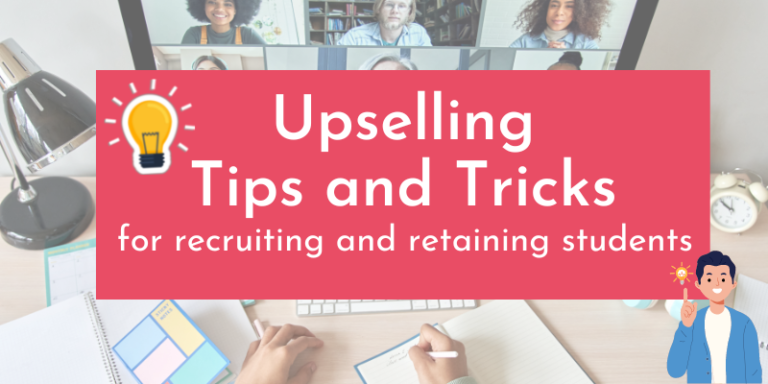Detailing the differences between online and in-person teaching

Are you an online ESL teacher looking to expand your offerings to in-person classes? Maybe you’re a digital nomad itching to pack up your laptop and teaching expertise to travel to foreign lands. Or perhaps you’re a seasoned in-person teacher looking to adapt your skills and transition into the world of online ELT.
Whether you are teaching online or in-person, teaching English to students in different settings has some crucial differences that you should be aware of before turning up to class or turning on your camera.
Here are six key differences between online and in-person teaching to help you decide which method of lesson delivery is best suited to you!
1. Location and Accessibility:
Not to be little-miss-obvious, but one of the key differences between online and in-class teaching is the physical location. In-class teaching requires students (and yourself!) to be present in a specific location, while online classes allow students to access educational materials and participate in lessons anywhere with an internet connection. The same goes for teachers. Online teachers can work from anywhere in the world so long as there is a stable internet connection. This makes online teaching the ideal choice for those looking to pursue their Instagram-worthy digital nomad dreams. The accessibility factor for online lessons makes it more flexible and convenient for learners with geographical constraints or other commitments. If you teach in-person classes, you will most likely be working in a classroom for a language school, but as an online teacher, either freelance or for a company, you will need to set up a quiet corner in your home to conduct your lessons.
2. Interactivity and Engagement:
In-class teaching offers face-to-face interaction between students and teachers, allowing immediate feedback, real-time discussions, and hands-on activities. On the other hand, online teachers rely on digital tools and platforms to facilitate interactions and feedback. While it may seem that online teaching lacks the same level of immediacy and intimacy, thanks to the ongoing advancements in E-learning, delivering an interactive and engaging online lesson is now easier than ever! Just because your student is behind a computer screen doesn’t mean you can’t engage them in physical activities, like treasure hunts, and sensory activities, like creating crafts. Whether you are teaching online or in person, you’ll need to sip on your creative juice to come up with activities that are engaging and appeal to different types of learners. If you’re teaching online, make use of multimedia content and an interactive curriculum, like Crystal Clear’s, to keep your students engaged and motivated. You can use physical and digital realia in both online and face-to-face lessons to bring your lessons to life.
3. Flexibility, Working Hours and Ka-ching:
As an online teacher, you can usually set your own work hours, which allows you to balance multiple streams of income. Online teaching can be your bread and butter or a part-time side hustle to put some extra ka-ching in your pocket. While some online teaching companies have a minimum scheduling requirement, others will allow you to set your own hours. As a freelance online teacher, you can decide on your working hours, depending on your lifestyle and how much you want to earn. But that doesn’t mean freelancers can have their cake and eat it too. The downside to being a freelance online teacher is that it will take time and consistent effort to build up your student base. Online teachers may have odd working hours to accommodate the peak study times of their students’ demographic. As an online teacher, you’ll want to bear in mind that some months are going to be busier than others, which means a fluctuation in your earnings. If you teach for a brick-and-mortar school, you’ll most likely have a fixed working schedule and fixed salary, which can make it easier to budget and plan your time off. While online teaching offers more flexibility, classroom-based teaching offers more stability on a month-to-month basis.

4. Pace of Learning, Personalisation and Lesson Preparation:
Most online English companies and brick-and-mortar schools will have a curriculum and preferred methodology for achieving learning outcomes. If you teach for a B&M school or online company, you will get prepared lessons for each class, so you will need to spend less time (or no time at all!) on lesson preparation; you can just show up and teach! While this may sound ideal, there won’t be much room to tailor your lessons to suit the needs of every individual student. Online teaching offers greater flexibility with the pace of learning and a more personalised learning experience that can accommodate diverse learning styles. Freelance ESL teachers have complete autonomy over what they want to teach and can adjust lesson materials and pace to suit the unique needs of every student. The downside? As a freelance online teacher, you’ll spend loads of time preparing your lesson materials, which can be time-consuming if you don’t have a membership to a ready-made curriculum. (Nudge, nudge! If you’ve been spending too much time planning your lessons, take a peek at the Crystal Clear memberships!) In-person teaching generally follows a fixed timetable and curriculum, which requires students to adhere to the same pace as their peers. Online teaching offers wiggle room to adjust your lesson content and methodology to suit your students, provided you are working for yourself and not for an online school.
5. Technology and Digital Literacy:
Online teaching relies exclusively on technology tools and digital platforms. In contrast, in-person instruction relies more on traditional instructional methods, like textbooks, but this isn’t always true for all B&M schools. All online teachers will tell you that at some point, a techno-nightmare will crop up to haunt your virtual classroom. The show, or in this case, the lesson must go on! If you work for an online school, the school will most likely have protocols in place for any technological nightmares that students or teachers may face before or during a lesson. A freelance online teacher will need to have an alternative plan and protocol in place for technological mishaps. Students and teachers need to be comfortable using computers, internet browsers, annotation tools, and other software applications for online lessons to be successful for both parties. Very young learners may be limited by their ability to interact in an online classroom, but you can still engage young minds in online lessons through song, dance, props and TPR. The bonus of online teaching is that it enhances students’ digital literacy skills and prepares them for the technology-driven world.
6. Social Interaction and Support:
Online lessons can be offered 1-2-1 or in small groups. In classroom settings, you’ll almost always have a larger group of students, which most likely involves more disciplinary action and enforcing of classroom rules. Online teachers won’t have immediate contact with the culture as they would in a traditional ESL classroom. First-hand experience with your students’ culture can give you valuable life experience and help you relate to your students on a deeper level. As an online teacher, you’ll miss out on classroom culture and may overlook the cultural sensitivities of your students. In-class teaching provides a rich social environment where students can interact and collaborate with their peers face-to-face. In-person lessons foster social skills, teamwork, and collaboration between your students. Online teaching, while it may lack physical presence, can still enable social interaction through group lessons and online communities. Online ESL companies and B&M schools will give you access to additional staff support and support from your colleagues, which can be an excellent networking opportunity. Although the nature of social interaction will differ, online teaching can cultivate a global network of students and professionals from diverse backgrounds. Teaching online can seem like a lonely and isolating road, so if you’re an online teacher looking for a community of teacherpreneurs to share with and learn from, join Crystal Clear’s ESL/EAL Masterclass Facebook Group.

Teaching online, whether for yourself or a school, and in-person lessons have advantages and considerations. But one of the best things about being an ESL teacher? The choice is ultimately in your hands! Many ESL students are opting for a blended learning approach that combines online education with traditional place-based classroom methods, so whether you decide to teach in-person or online (or both!), there is a bounty of learners, both online and in classrooms, who are ready to learn English!
A question that often pops up in our inbox is, “Can I use Crystal Clear materials for in-person classes?” And the answer? YES! You can!
Our web-based curriculum can easily be adapted for in-person lessons for 1-2-1 instruction, small groups or whole classrooms! Watch our live discussion with Crystal Clear teacher, Mary Harper, and learn how she adapts Crystal Clear phonics materials for her group classes of bubbly three-year-olds!
Watch the live discussion here!







